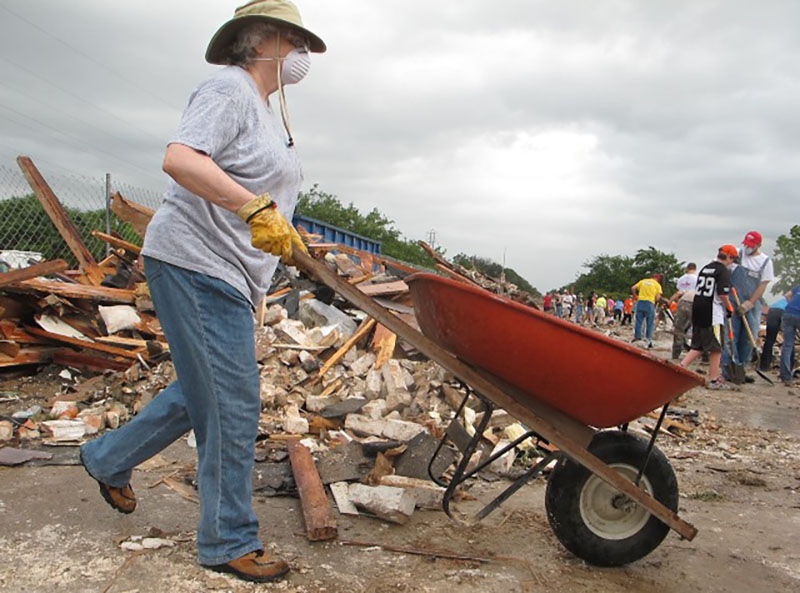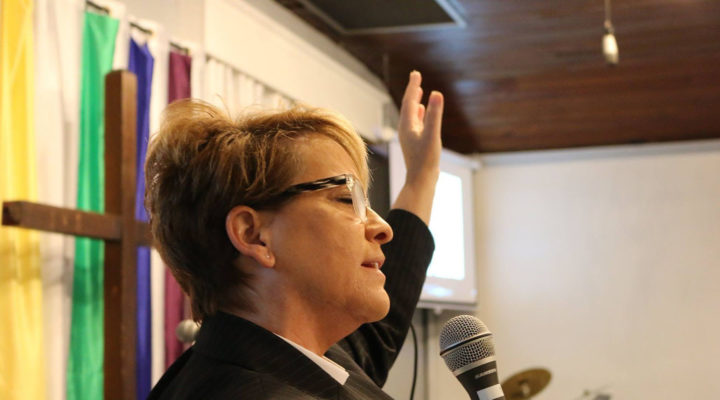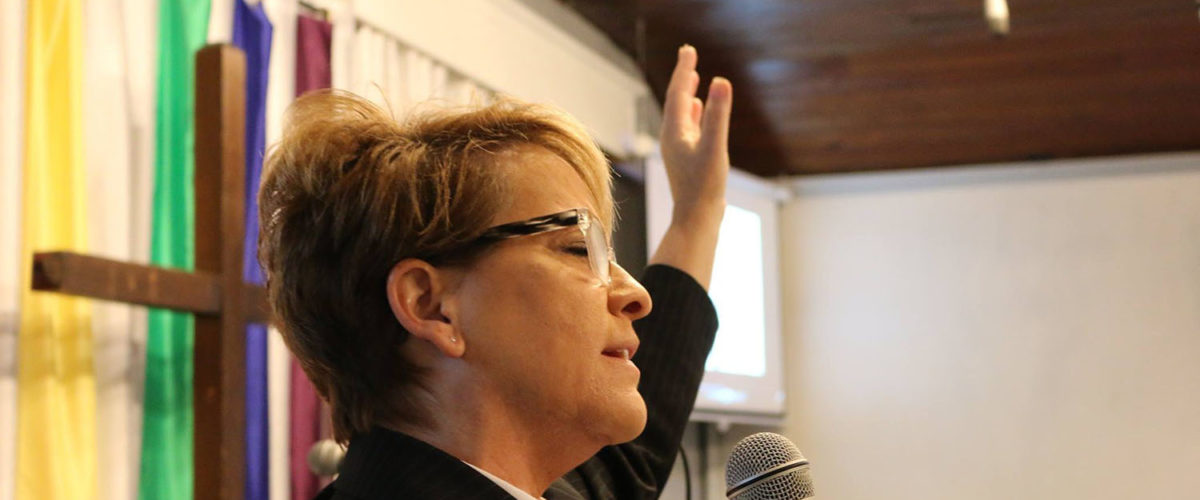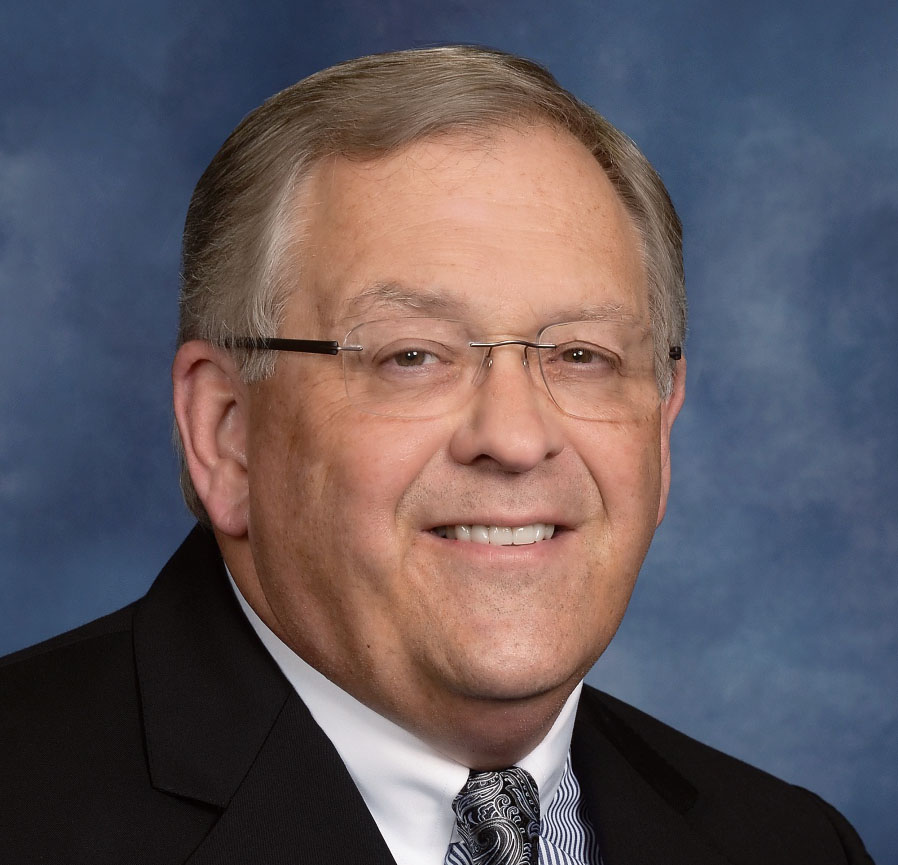Pastor Terri Steed Pierce knew even before arriving at church the morning of June 12 that worship was going to be radically different at Joy Metropolitan Community Church in Orlando.
Many in her LGBTQ congregation knew victims killed or wounded at Pulse, the gay nightclub located less than 2 miles from the church. Steed Pierce and other staff quickly shifted from hosting a worship service to one more akin to a wake.
In the hours, days and weeks that followed, the congregation became a safe haven for survivors and their families and a leader in the city-wide vigils and calls for peace.

Church on the Drive in Orlando is a Cooperative Baptist congregation that prepared care packets for police and other first-responders after the Pulse shooting in June. The church also opened its facilities as a safe space following the tragedy. (Photo/Betsy Taylor-Stern)
“Easy is not the right word,” she said. “But it came together very naturally.”
The Pulse massacre thrust Joy MCC into the ranks of churches of all denominations around the country confronted with the worst kinds of suffering that nature and humankind have to offer.
Pastors and disaster recovery experts familiar with these situations say it takes a combination of planning and gospel-centered compassion for any congregation to not only survive but serve in the midst of calamity.
‘Be Christ’s presence’
There are plenty of recent examples, said Tommy Deal, a hospice chaplain in Georgia and former U.S. disaster response coordinator for the Cooperative Baptist Fellowship.
Baptist and other congregations have been shining examples of healing in the aftermath of the Pulse and Sandy Hook shootings, the church bombings in Las Cruces, N.M., the 2013 Oklahoma tornado season and more, Deal said.
“They are good examples of churches ready to be examples of Christ,” he said.
Many churches prepare for crises by forming committees and action plans designed for any challenge, he said. That includes designating escape routes and identifying staff or lay members responsible for calling 911.
“They didn’t plan for the scenario they were dealt, but because they had had a plan, they could mesh it into the actual need presented to them.”
But it also takes core values of service to each other and their communities for churches to rise to such challenges, Deal said.
“It’s not enough to proclaim the gospel, but to be Christ’s presence.”
Pulling together
Congregational cohesiveness is the best form of disaster preparation, said John Crowder, senior pastor at First Baptist Church in West, Texas.
“You have to be strong before the storm hits,” he said.

Volunteers streamed in from across Texas and the nation to help the City of West, Texas recover from a 2013 fertilizer explosion that destroyed homes and lives. First Baptist Church was the hub of recovery activity and planning. (Photo/Jeff Brumley/BNG)
Their storm came in April 2013 when an ammonium nitrate explosion at a fertilizer plant destroyed more than 150 residences and other buildings in the small town located near Waco. Fifteen people, including first-responders, were killed in the blast that resulted from an intentionally set fire.
First Baptist became the hub of faith-based and civil recovery and rebuilding efforts. As thousands of volunteers from a variety of denominations descended on the city in the following months, the church often resembled a military style forward operating base.
Neither Crowder nor his congregation saw it coming.
“Most people don’t think about stuff like this before it happens,” he said.
What made it possible for First Baptist to immediately begin caring for their neighbors was the hard work they had done in previous years striving for congregational unity, according to Crowder. That made it possible for them to step up in service when the unexpected happened.
“In terms of preparedness, we were blessed with a healthy congregation … so when we needed to pull together and work hard we already had the stability there,” he said.
‘They took care of it’
Having a missional mindset also prepares congregations for crises, said Jack Mercer, senior pastor at Church on the Drive in Orlando.
The CBF congregation became a staging and rest area for law enforcement and first-responders who were working the Pulse nightclub shooting scene.
Mercer said he was in a car on the way to a mission project in Kentucky when he learned of the shooting. He continued on his way after consulting with staff members about how the church could respond.
Immediately, they opened the sanctuary for prayer and reflection and started ministering to anyone who needed care. Offering the church as a funeral site for victims’ families, assembling care packets and planning and hosting a seminar and a grief care workshop for local clergy came later.
“They took care of it,” Mercer said of his staff in the early hours after the shooting. “They didn’t need a whole lot of guidance to respond to something like this.”
Partly, that’s due to the fact the congregation had helped victims after another shooter event in 2009. But it’s also because the congregation’s core values include a missional outlook and regular participation in missions.
“The church … has always engaged in caring for members of the community,” he said. “To immediately pull together is part of the church’s DNA.”
“Our message is our table is open to you regardless of who you are.”
Rising above hatred
Steed Pierce says that spirit is also in the DNA of her congregation and of its denomination, the Metropolitan Community Church.
As a congregation founded by and for members of the LGBTQ community, its mission is to provide sanctuary for those unwelcome elsewhere.
“Our message is our table is open to you regardless of who you are,” Steed Pierce said.
So when survivors and the friends and family of victims of the Pulse attack started arriving at Joy, its staff and members instinctively knew what to do, she said.
“It was a natural place to be because it’s always been a safe haven,” she said, adding, that it sends a powerful message to all of those confronting evil.
“God is still with us in the midst of those things and we have the capability to rise above hatred and hurt because we have done it through our whole existence,” Steed Pierce said.




